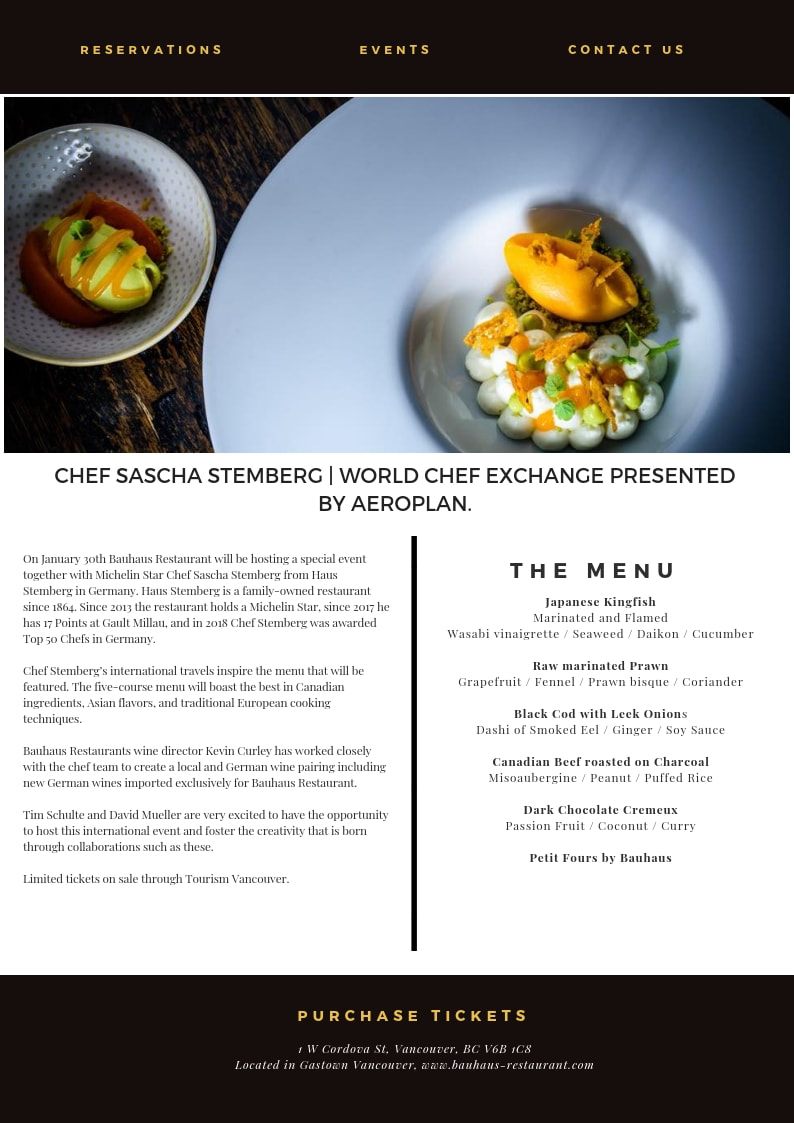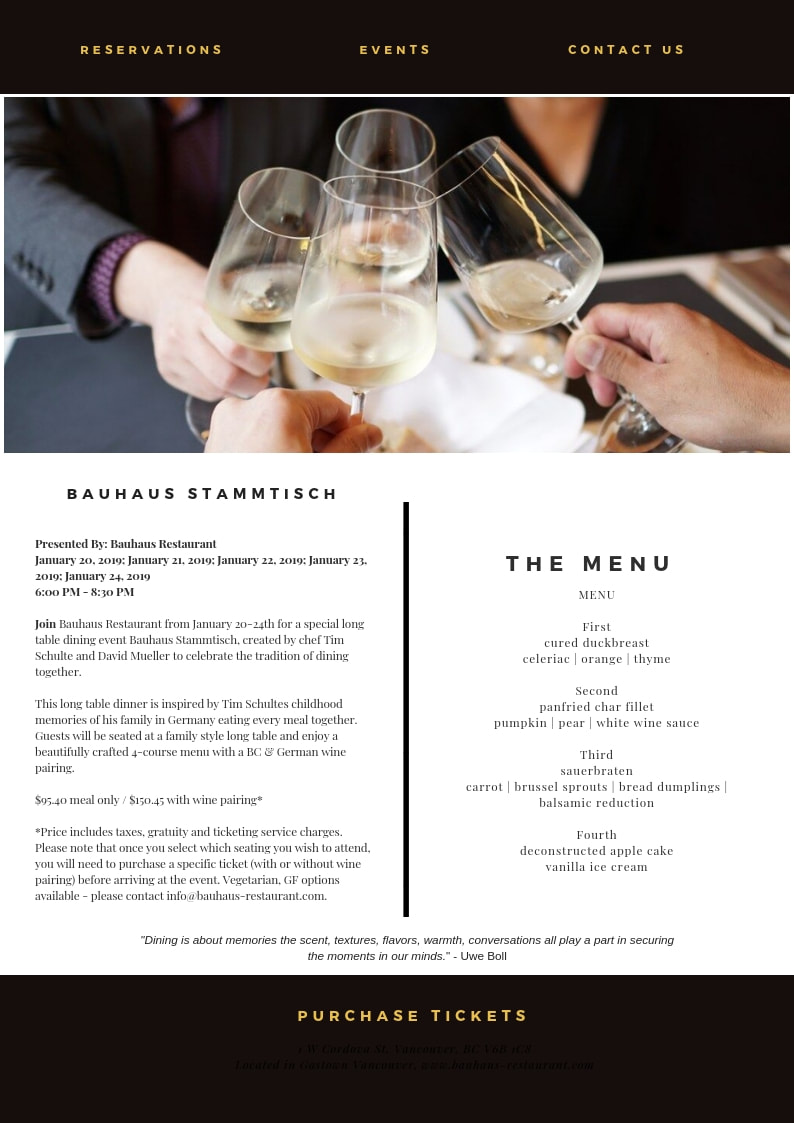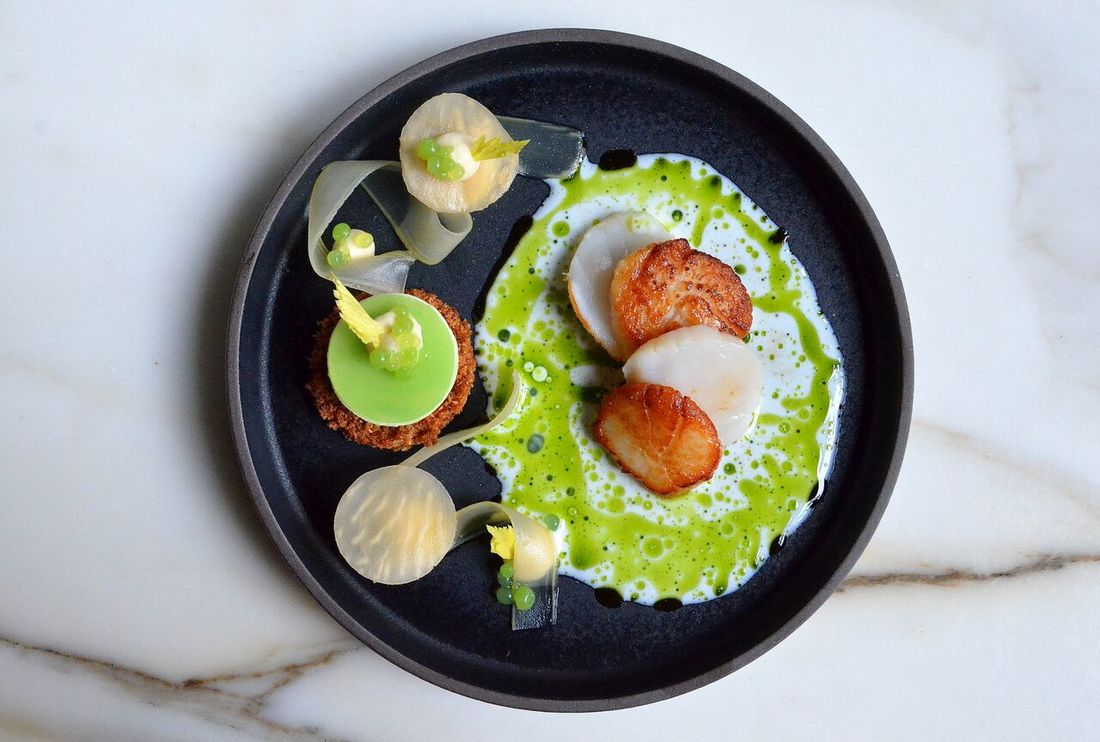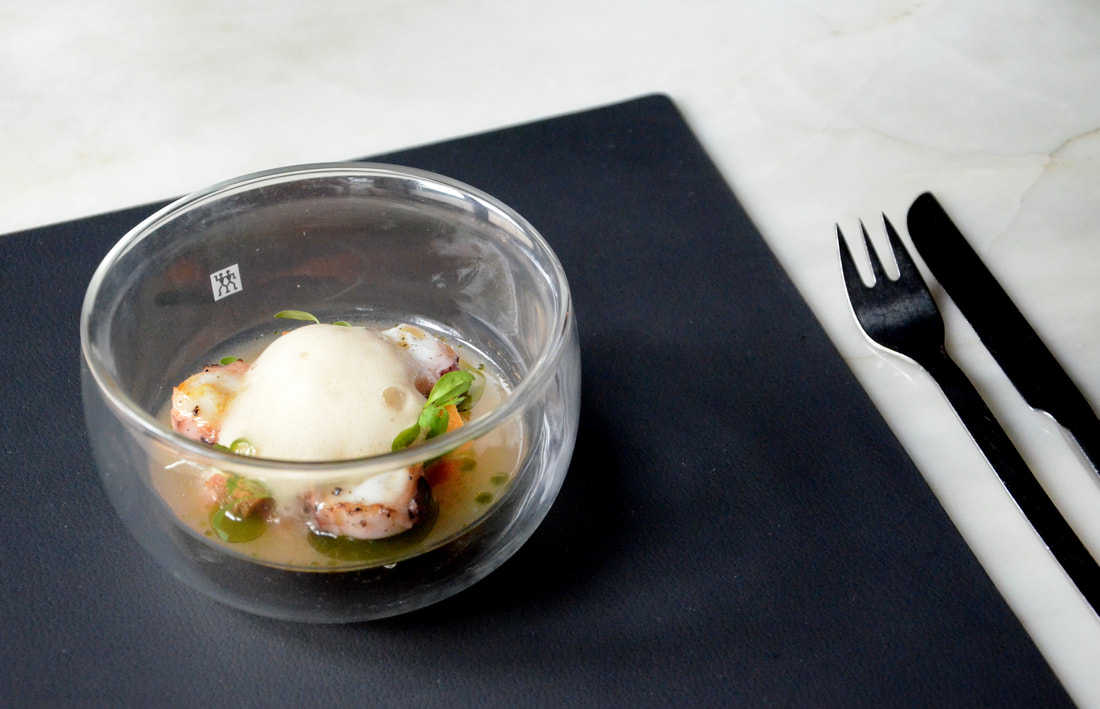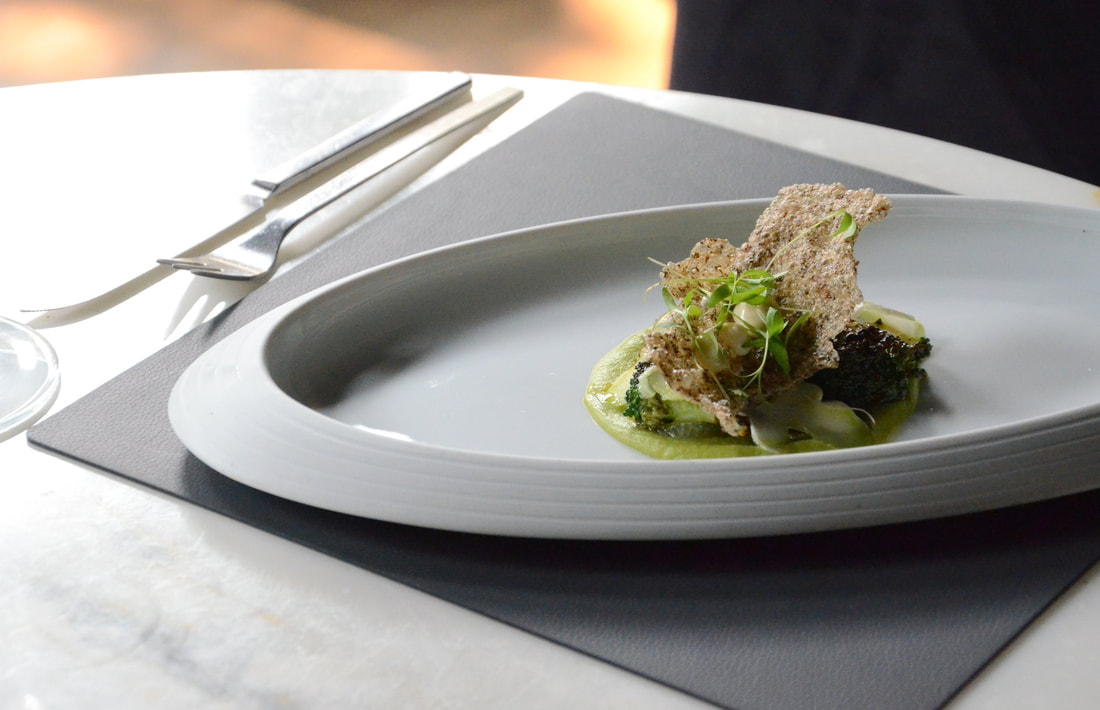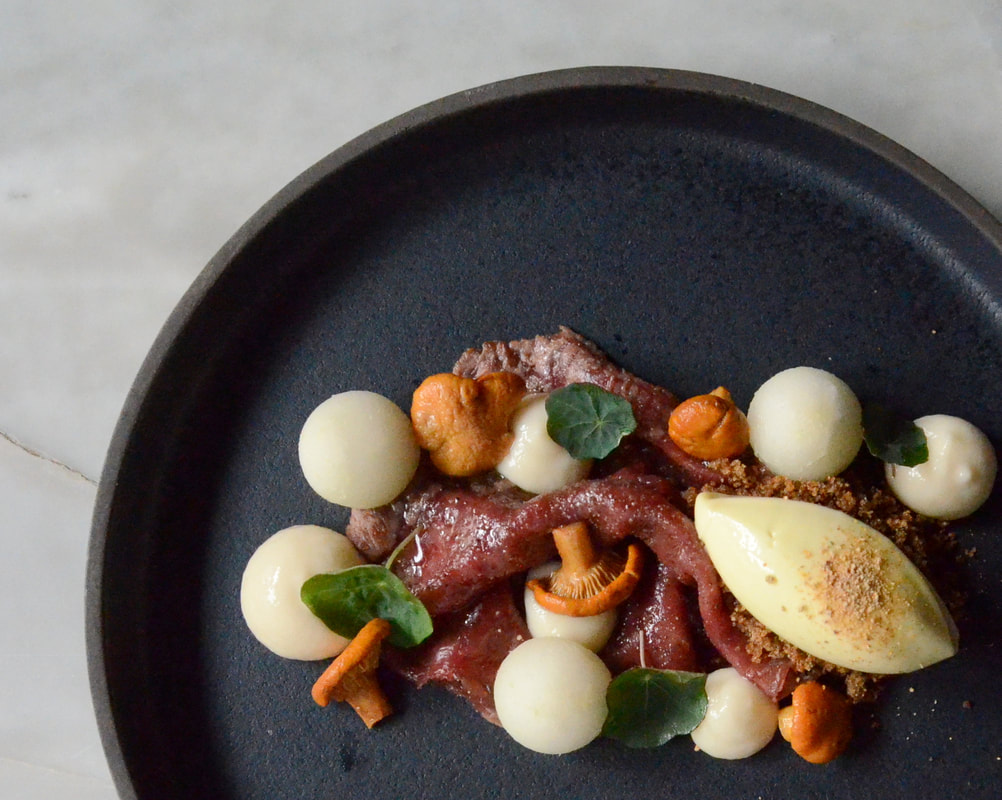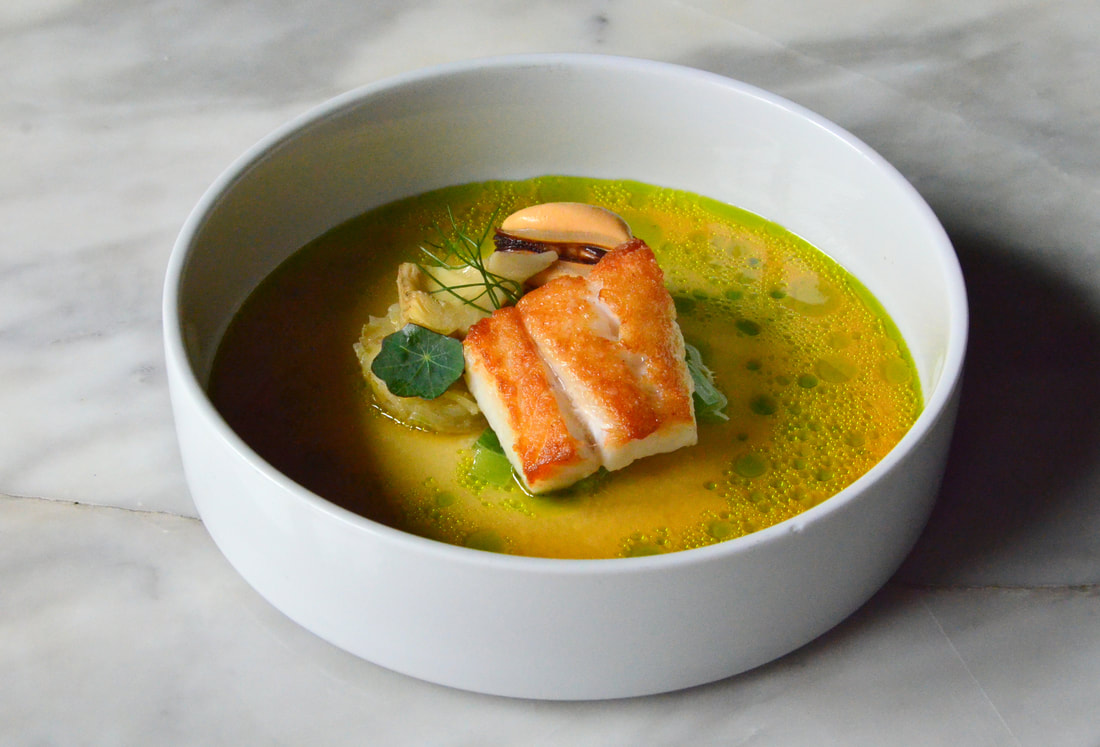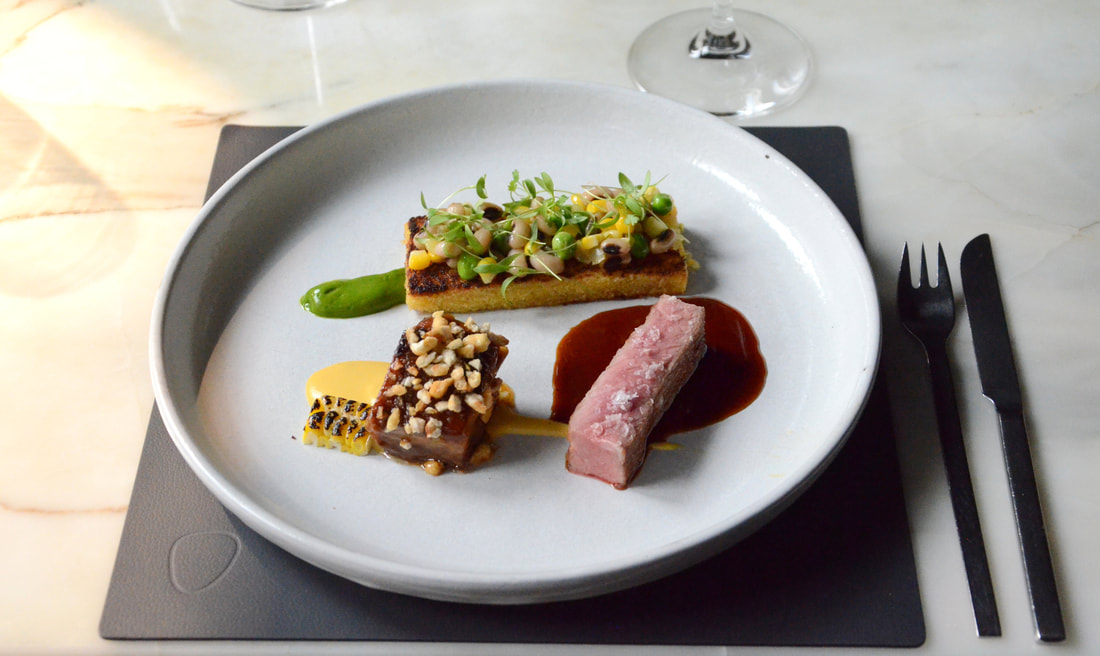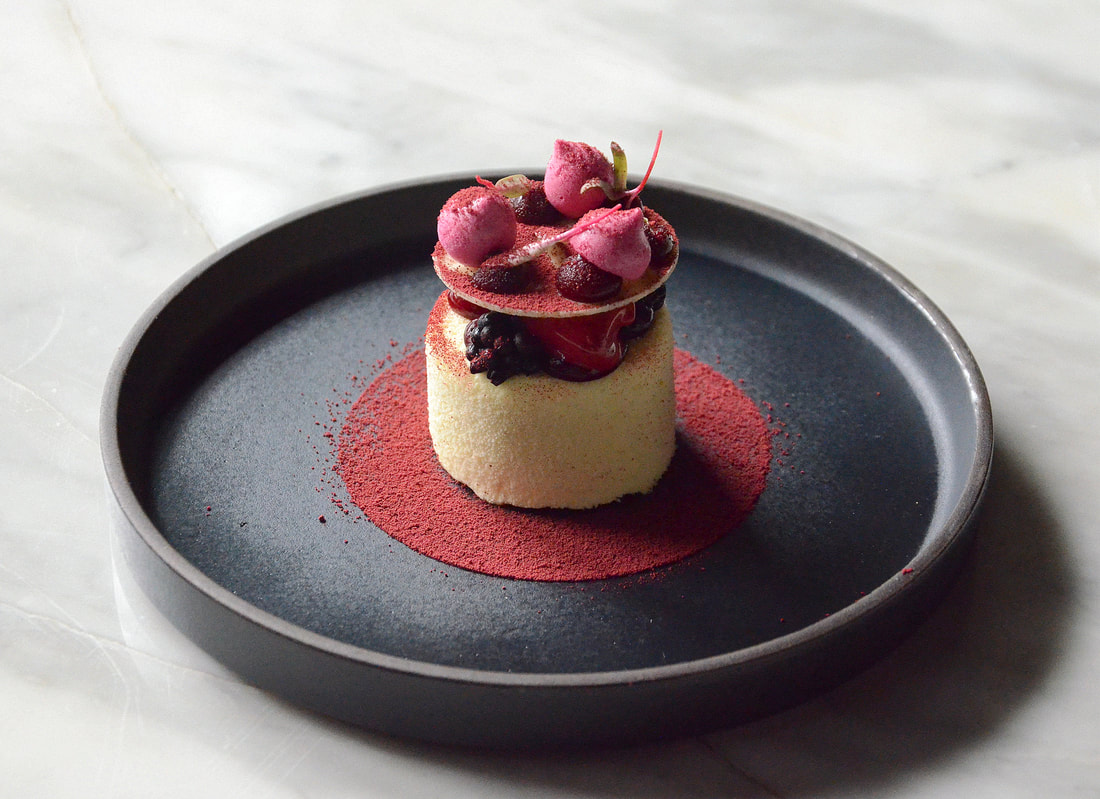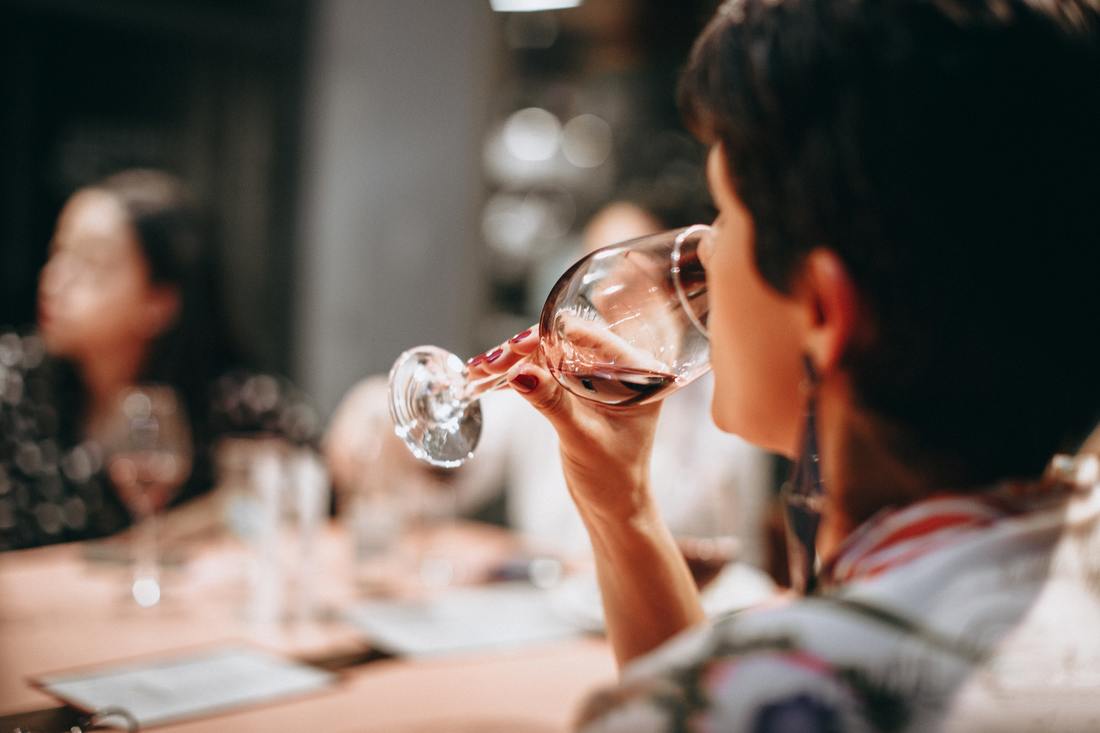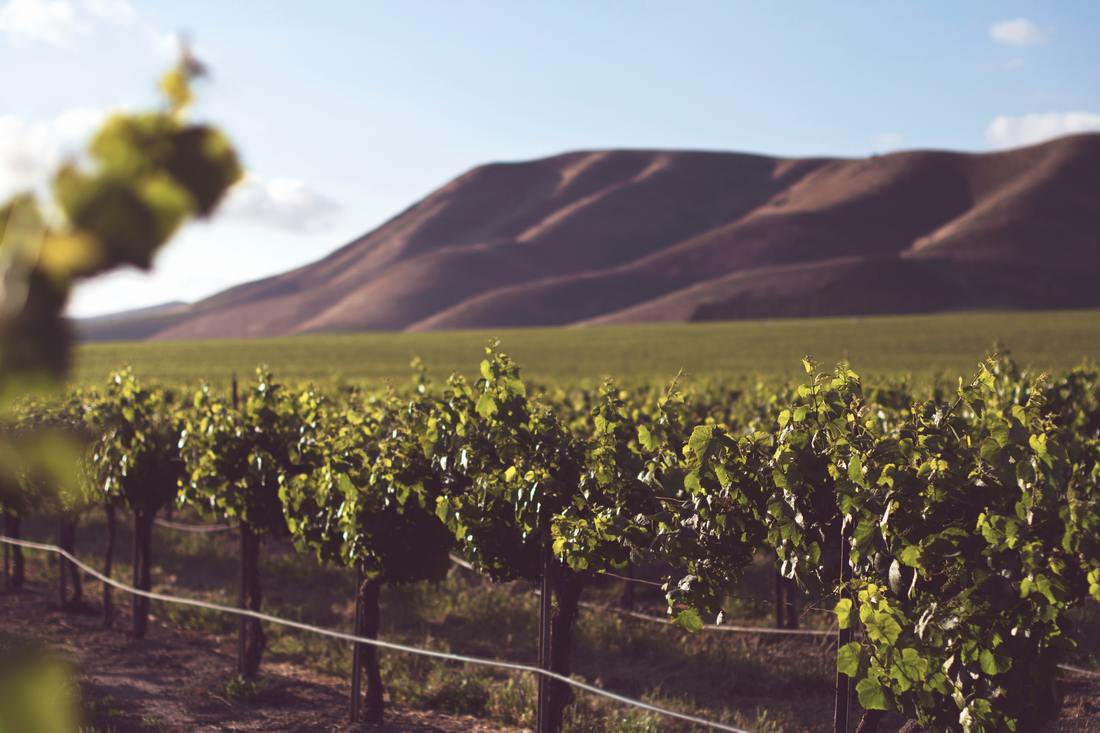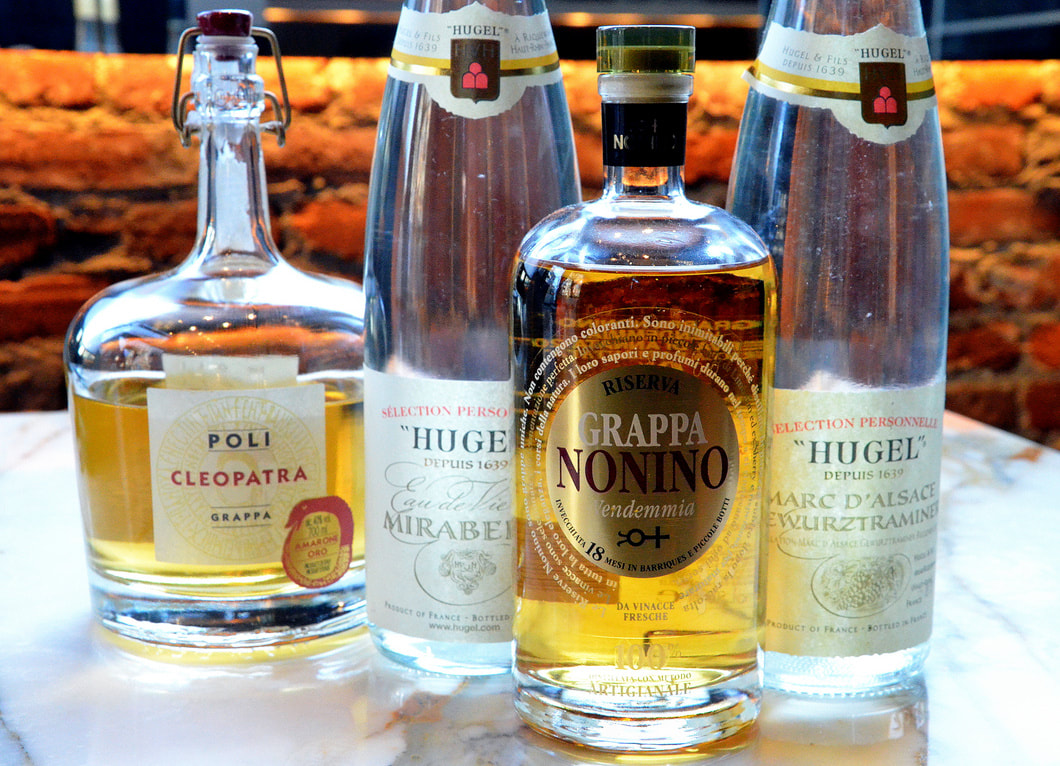很多人来问我:“Bauhaus餐厅是什么样子的?德国菜又是什么?” Many people who have never dined at Bauhaus Restaurant come to me and ask - "What is Bauhaus Restaurant.? What is German cuisine exactly?". - Well at Bauhaus we have two menus that represent German cuisine today our Chefs Tasting Menu and German Classic Menu. The dish featured in the post is from a past Chef Tasting Menu featuring scallops with celeriac, apple, and buttermilk. 这里主推的这道菜来自我们的主厨菜单,主要原材料是扇贝,另加块根芹、苹果和白脱牛奶。 Video created with Opentable. Reserve now. Post by Natalie Boll The new Tasting Menu from Executive Chefs David Mueller and Tim Schulte has been released. Highlighting the fresh, sun-soaked flavours of the season, this menu features venison, broccoli, rockfish, corn, and blackberries. Keep reading to see the whole menu. pulpo * gazpacho / garlic / foccacia broccoli hemp hearts / lime / chili venison chanterelle / pear / gorgonzola rockfish * mussel / artichoke / leek pork * corn / legumes / arugula beetroot *
blackberry / buttermilk / white chocolate For Uwe's last Wine Club Dinner before the summer, we'll be exploring the wines of Italy! On June 11 at 7pm, join us for an Italian-inspired feast prepared by Executive Chefs David Mueller and Tim Schulte, served alongside international wines chosen by Uwe himself. As always, the wines on offer will be heavily discounted but we can promise you this - the evening will feature some exclusive, hard-to-find picks!
The cost of this dinner is $120 plus wine. Limited seating available, so reserve now! Bauhaus Restaurant's Wine Director, Alan Koller, discusses the humble origins of Grappa and Eau de Vie, their great evolution, and the best ones we offer at Bauhaus Restaurant. "Waste? Really Alan, what are you on now? Well, allow me to explain in my usual round about way! Waste is defined as any substance which is discarded after primary use, or it is worthless, defective and of no use. In the wine world there is something that qualifies as waste (for the most part) – the pomace created from making wine. The leftover skins, seeds, and stems of the grapes are quite often discarded, used for compost, or feed to rabbits and horses. Funny enough, it’s not advisable to give to pigs and poultry. I guess the rabbits and horses can handle the elevated levels of antioxidants. There is also another place where waste can happen: the orchards. With all those fruit trees, not all the fruit is suitable for sale. What to do, what to do… Feed these leftovers to the pigs? Well yes, sometimes, but that seems a bit of a waste. If only there were something we could do to help maximize a grower’s or a wine maker’s return on their investment… Oh, wait! There is - let’s make Grappa and Eau de Vie! Now, I know that the word Grappa creates memories in many of my readers, and half of those memories are negative I am sure. I myself explain most of Europe’s spirits as ‘classier named moonshine,’ and in many ways I am not wrong. Whether we talk about Eau de Vie, Grappa, Schnapps, Slivovitz or any other booze made from grape pomace or rotting fruit, the origins go back to earlier times. Back to the days of bored men looking for ways to make alcohol. In some situations, monks were involved. They had to do something in their God-fearing celibate life, I guess. But anyways, think it through: if you had 10 bushels of plums that were bruised and gnawed on by critters would you not think to yourself, ‘I wonder what might happen if we ferment these things.’ And then you discover a pot still, and now you have high octane alcohol that doesn’t go bad, unlike the fermented fruit. You could dry the fruit, but alcohol always wins the heart of a bored farmer. In the same breath, you can imagine vineyard workers looking at this pile of grape pomace and going, ‘huh, let’s try something because I need a something a little more serious to drink!’ As much as I tease the origins of such spirits, I will admit they have evolved into incredibly refined products for the most part today. Wineries make some, but there are distilleries around Europe that focus solely on the production of Eau de Vie and Grappa. I am going to begin my more serious part of the blog by explaining the differences between Eau de Vie and Grappa. Eau de Vie is fruit-based distilled alcohol. Grappa is the distilled pomace from grapes. Brandy is the distillation of whole grapes. Eau de Vie is never aged in oak, as the oak would mask the delicate fruit tones. Grappa can be unoaked, referred to as bianco, or oak aged. The oak aged grappa is easily recognized by its golden colour. That is the basics. Now, because these products have become more popular, there is more attention to quality then ever before. For example, you can’t produce quality grappa from grape pomace that has been overly extracted. When making wine, if the wine maker decided to soak the grapes for long periods of time to extract as much flavour as possible into their wine, that pomace will produce a poor quality grappa. In Eau de Vie, if you use rotting fruit, or green fruit, you can create subtle but noticeable harsh flaws in your spirit. At Bauhaus, we have a collection of wonderful Grappas and Eau de Vies. Unfortunately, what I would love to have is German Schnapps, but there are no quality ones in Canada. I am going to showcase 4 of our best for you now. 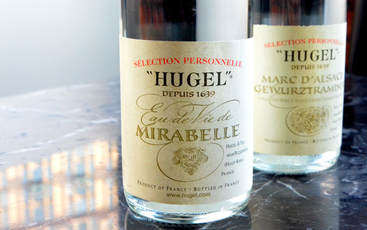 Hugel Mirabelle: A wonderful Eau de Vie made from the Mirabelle plum. Twenty percent of Mirabelle plums are used specifically to make Eau de Vie. Production of this involves a fermentation of the plums followed by a double distillation. If you do a single distillation you will have a much harsher bite to the spirit. A double allows the spirit to drink smoother, while still showing some of the subtle fruit and floral tones of the plum. Hugel did a wonderful job with this spirit. Hugel Marc’D’Alsace Gewurtztraminer: Hugel’s grappa! Oh wait, it isn’t a grappa, and it isn’t a Eau de Vie either. Technically, it is an Eau de Vie de Vin. I know, ‘come on Alan, don’t just throw curve balls at us.’ Well I like to keep you on your toes. The Mirabelle is an Eau de Vie de Fruit. The Marc’D’Alsace is made from the juice of the gewurtztraminer grape, not the pomace. Essentially making the base to brandy. Now, if you were to age the spirit in oak, then you would have a more traditional type of brandy. Thankfully Hugel did not do this, because there is a subtle beauty to this spirit. You can sense the delicate freshness of the gewurtztraminer and the finish is smooth and lingering. 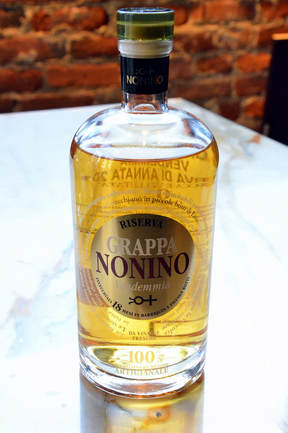 Nonino Vendemmia Grappa Reserva: Nonino has been making grappa since 1897, and all Nonino does is make grappa. Aged for 18 months in French oak. Certified 100% natural method, meaning they don’t add anything to boost flavour or alcohol content. Nonino collects the pomace right after pressing for wine production, de-stems the pomace and immediately goes to a very controlled fermentation. This stage allows the master distiller to ensure that they can create a beautiful expression of the grape without the harsh by products of inconsistent of extended fermentation. Small batch distilling is mandatory at Nonino, the master distiller wants to ensure the purest expression of flavour possible. Nonino ages in various types of wood, and this is all to create unique expressions of their passion. With grappa there is always been a perception of harshness, but this is not one of those grappas. Very clean, somewhat floral on the nose, with a smooth finish. Meant to be sipped and enjoyed slowly as you relax after dinner. 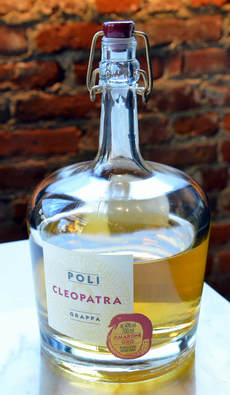 Poli Cleopatra, Amarone: Okay, so now we have Poli. They officially became a producer in 1898. Their family history in Veneto can be traced back to the 1400s. The Nonino Reserva and the Cleopatra have some similarities in the way they ferment and the way they ensure the best quality of product. Now there is a difference though. The still they use is called a crysopea still. Feel free to look it up for an in-depth explanation, as it is complicated to explain but the results are apparent. The main point is this though: the crysopea still allows for the alcohol to be boiled at a lower temperature. This creates a more elegant and expressive spirit. The Cleopatra follows this rule absolutely. They age the Cleopatra in French Barrique Oak for one year, and due to the small barrel size you will notice the oak when you try this grappa. More importantly that oak is only a moderate hint. They are very careful not to overpower the other subtle flavours in the grappa. Rarely will I say I enjoy grappa but this is the one that may have changed my mind. When should you drink grappa and eau de vie? After dinner. How should you drink grappa and eau de vie? Despacito, slowly, or get a bianco grappa and dump it in your espresso. I hope you enjoyed my look into grappa and eau de vie, I hope you come in and test me on these products. Let’s see if my writing matches what you experience. Keep drinking and living, folks!" |

